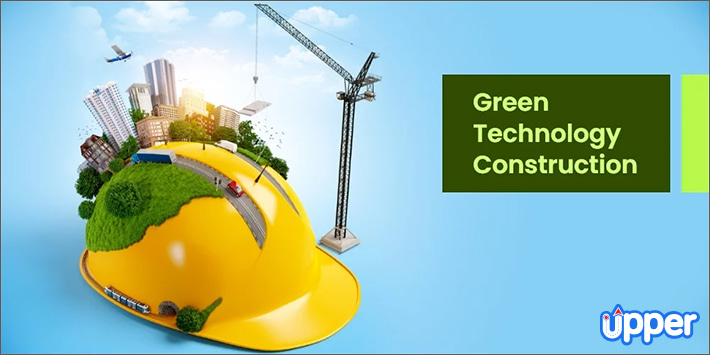Discover how sustainable construction is reshaping Britain’s building industry, delivering both environmental benefits and remarkable cost savings for forward-thinking developers.
Understanding Sustainable Construction in the UK Context
Sustainable construction in the UK represents a fundamental shift in how we approach building projects, encompassing everything from material selection to end-of-life considerations. At its core, it’s about creating structures that minimize environmental impact while maximizing social and economic benefits. The UK construction industry, which accounts for approximately 40% of the country’s total carbon emissions, has become increasingly focused on sustainable practices, driven by both regulatory requirements and market demands. The Construction Industry Council (CIC) reports that sustainable buildings can reduce energy consumption by up to 50% compared to conventional structures.
- Building Regulations Part L and F (2022) mandate improved energy efficiency standards
- BREEAM certification sets the UK standard for sustainable building assessment
- The Future Homes Standard, coming into effect in 2025, will require new homes to produce 75-80% less carbon emissions
- Net Zero Carbon Buildings Framework provides guidelines for achieving carbon neutrality
Common misconceptions often suggest that sustainable construction is merely about using recycled materials or installing solar panels. However, it encompasses a much broader spectrum of practices, from site selection and design to operational efficiency and eventual decommissioning.
The True Cost Analysis of Sustainable Construction
When evaluating the financial implications of sustainable construction, it’s crucial to consider both immediate costs and long-term benefits. According to the UK Green Building Council, while sustainable buildings may require an initial premium of 5-15% above conventional construction costs, they typically deliver significant savings over time. Operating costs can be reduced by up to 37% annually through improved energy efficiency, water conservation, and reduced maintenance requirements.
- Initial Investment Requirements:
- Sustainable materials: 8-12% premium
- Energy-efficient systems: 15-20% additional cost
- Certification processes: 2-5% of total project cost
- Government Incentives:
- Enhanced Capital Allowances (ECA)
- Renewable Heat Incentive (RHI)
- Green Business Fund support
ROI timelines typically show break-even points between 3-7 years, with significant returns thereafter. Properties built to sustainable standards often command premium rental rates of 6-11% and higher resale values.
Environmental Benefits and Their Commercial Value
The environmental advantages of sustainable construction translate directly into tangible commercial benefits. Studies by the World Green Building Council show that sustainable buildings achieve 25-30% lower carbon emissions and consume 30-50% less energy than conventional buildings. These environmental improvements carry significant commercial value in today’s market, where environmental performance increasingly influences property values and tenant decisions.
- Carbon Reduction Achievements:
- Reduced operational carbon: 40-50% decrease
- Lower embodied carbon: 20-30% reduction
- Improved water efficiency: 30-50% savings
- Waste Management Benefits:
- Construction waste reduction: up to 70%
- Enhanced material recycling rates: 90%+
- Reduced landfill costs
Social and Economic Advantages
The social and economic benefits of sustainable construction extend far beyond environmental considerations. Research indicates that sustainable buildings can increase occupant productivity by up to 8-11%, reduce sick days by 30%, and significantly improve overall wellbeing. These improvements translate into substantial economic advantages for building owners and occupants alike.
In terms of market differentiation, sustainable buildings consistently outperform conventional properties in both occupancy rates and tenant retention. The UK Green Building Council reports that environmentally certified buildings maintain 3-7% higher occupancy rates and command premium rents of up to 11%.
Implementation Strategies for UK Builders
Transitioning to sustainable construction practices requires a systematic approach and careful planning. Successful implementation typically involves several key steps:
- Initial Assessment and Planning:
- Conduct sustainability audit of current practices
- Identify priority areas for improvement
- Develop phased implementation timeline
- Set measurable sustainability targets
- Material Selection and Sourcing:
- Establish sustainable procurement policies
- Create approved supplier lists based on sustainability criteria
- Implement material tracking systems
- Technology Integration:
- BIM implementation for efficiency
- Energy modeling software adoption
- Smart building systems integration
Measuring Success and ROI
Effective measurement of sustainable construction success requires comprehensive monitoring across multiple metrics. Key performance indicators should include both environmental and financial measures, with regular assessment and reporting. Recent data shows that sustainable buildings achieve operating cost reductions of 25-30% while increasing asset value by up to 10%.
Notable UK success stories include The Edge building in London, which achieved a 98% BREEAM rating and demonstrates energy savings of over 70% compared to typical office buildings. Similarly, the Bloomberg HQ in London showcases how sustainable design can deliver both environmental and financial benefits, with a 73% reduction in water consumption and 35% energy savings.
Making the Investment Decision
The decision to invest in sustainable construction should be based on a comprehensive evaluation of risks and opportunities. Consider these key factors:
- Financial Considerations:
- Initial capital requirements
- Expected ROI timeline
- Available funding options
- Tax implications and incentives
- Risk Assessment:
- Market demand projections
- Regulatory compliance requirements
- Technology obsolescence risks
- Supply chain considerations
Conclusion: The Bottom Line on Sustainable Construction
The evidence overwhelmingly supports the value proposition of sustainable construction in the UK market. With potential energy savings of 30-50%, increased property values of 5-10%, and enhanced occupant wellbeing, the initial investment in sustainable practices typically pays for itself within 3-7 years. As regulations tighten and market demands evolve, sustainable construction is no longer just an ethical choice but a commercial imperative for forward-thinking builders and developers. The key to success lies in careful planning, systematic implementation, and a long-term perspective on value creation.
FAQ
What are the three main principles of sustainable design construction?
Sustainable design principles aim to: Optimize site potential. Minimize non-renewable energy consumption and waste. Use environmentally preferable products.
Sources
[1] https://ukgbc.org/wp-content/uploads/2024/07/Sustainable-Construction.pdf
[2] https://compliancechain.com/sustainability-in-construction-why-it-matters/
[3] https://en.wikipedia.org/wiki/Sustainability_in_construction


Leave a Reply